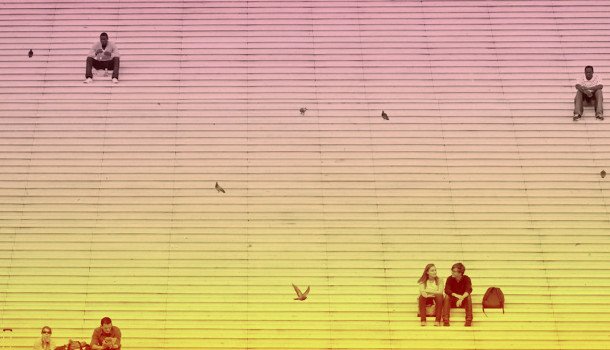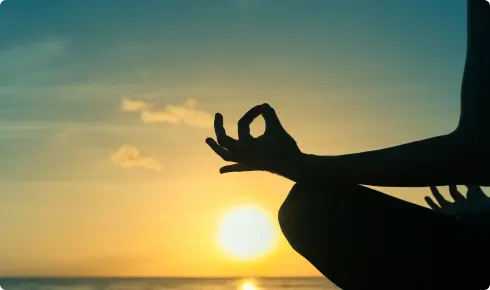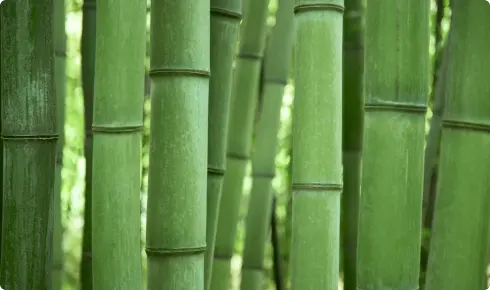This hack or that routine may not be the best thing for everyone, but you can still become more reflective on your own terms.
BY FAISAL HOQUE
As I write this, I’m sitting by myself, watching the blanket of white snow covering everything outside my window. I’m not really thinking about anything specific. Millions of people around the world are doing the same thing, right at this very moment—doing nothing. Someone might be watching the waves crash onto the shore in Goa, India. Another might be mentally tracing the torrential rain on their office window in London.
Children in schools around the world are doodling in their notepads, their minds racing away in a world of their own. Daydreaming and solitude have long been linked to mental benefits like improved mindfulness and creativity.
But in order to maximize those benefits, you need to let yourself drift off with your own thoughts whenever the opportunity arises. And there’s no one routine or habit that helps everyone do that—even if we all had the time.
THE CASE FOR SOLITUDE
Still, some practices are more common than others. From Beethoven to Newton to Buddha to Darwin, all experienced critical awakenings during self-imposed solitary periods. The psychologist and author Rollo May explained this phenomenon very well in his book The Courage to Create. “In order to be open to creativity,” he wrote, “one must have the capacity for constructive use of solitude. One must overcome the fear of being alone.”
Nicola Tesla, one of the greatest innovators of all time, concurred:
“The mind is sharper and keener in seclusion and uninterrupted solitude. Originality thrives in seclusion free of outside influences beating upon us to cripple the creative mind. Be alone—that is the secret of invention: Be alone, that is when ideas are born.”
These days, we now have the scientific evidence to back up those claims. Research conducted by Greg Feist of San Jose State University found that when people let their focus shift away from others around them, they’re better able to engage in “metacognition,” the process of thinking critically and reflectively about your own thoughts.
IT CAN’T SNOW EVERY DAY
Where things get tricky, though, is figuring out what to do in order to encourage metacognitive thought in the first place. I may find the snowstorm outside soothing, but that outlet for quiet reflection isn’t something I’d planned, and it isn’t something I can re-create whenever I like.
On the other hand, when we’re routinely overwhelmed with outside noise, carving out space for unstructured daydreaming takes planning, structure. Even if you could afford to book regular, extended periods of time alone, chances are you wouldn’t become a creative genius or mindful guru.
Sometimes the most productive periods of contemplation come to us unawares and don’t last very long—but that doesn’t mean they aren’t useful. We’ve all had moments where we have gone for a long walk to clear our heads and found the answer to a problem we’d been grappling with. Even that momentary deep breath before a decisive action can help clear our minds and regain our focus.
HOW TO PLAN FOR UNPLANNED REFLECTION
So the real question becomes how to make the most of those moments that arrive serendipitously. It starts with recognizing that everyone is different. Personally, it’s often the mechanical activities of my day that let me find respite from my racing thoughts, even when I’m not looking for it. Here are a few ways to make room for creativity and mindfulness without having to overhaul your daily routine:
1. Rethink your mornings. I don’t wake up at the crack of dawn to check the news, write emails, hop on social media, or to dive into work-related matters. My early mornings are my time to unplug from the world. And that sets the promise of my day: focus, creativity, and positivity. Rather than running through what I need to get done that day, I try to let go of things through mindful meditation. Of course, not everyone can afford an unhurried morning, so perhaps this period is better left for the hour or so before bedtime. The point is to find quieter periods in our natural rhythms where we can declutter our mind.
2. Slow down. I love walking slowly. Giving myself an extra few minutes to get somewhere lets me clear my head a little bit before reaching my destination. Sure, there are times when we are in a rush, but there are always moments when we aren’t. It is up to us to make sure that we’re aware of them when they hit us to take full advantage.
3. Get outside. There’s a reason schoolkids are given recess and adults take long backpacking trips. But even a 90-minute solo walk through nature can positively affect our brain, according to a study published by the Proceedings of the National Academy of Science. Here, too, the main thing isn’t to become a championship backpacker—it’s to find those outdoor experiences that are available to us and make the most of them while we’re there.
In a week or two, the snow outside of my window will melt, and I’ll have to dig back into my inbox way before then. But sometimes adopting this hack or that new routine isn’t what it takes to become more mindful or creative. It’s just a matter of practicing reflection on our own terms and our own time.
Copyright (c) 2016 by Faisal Hoque. All rights reserved.
[Photo: Flickr user Florian Plag]
Original Article @FastCompany.















